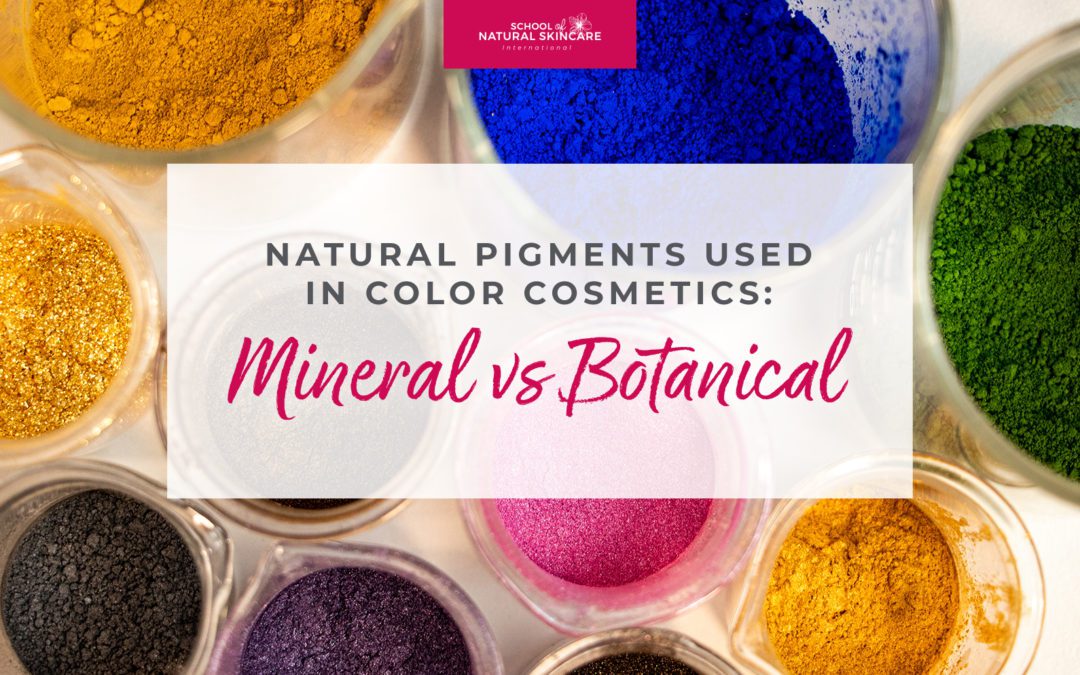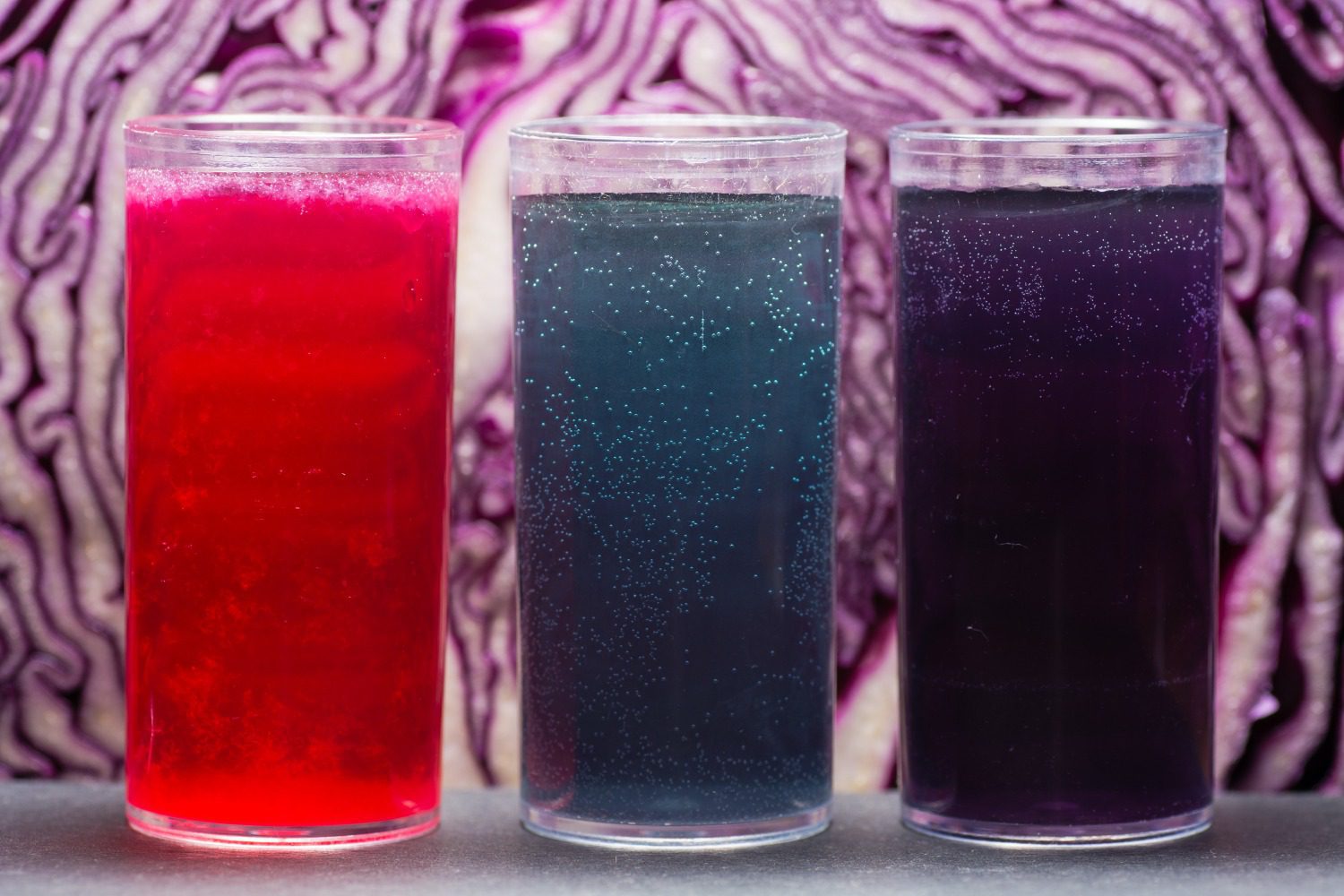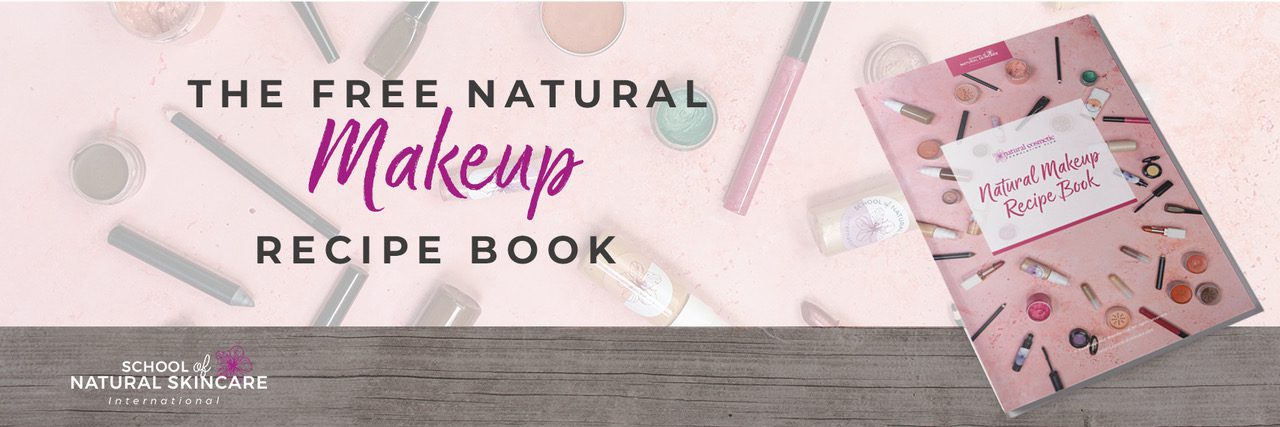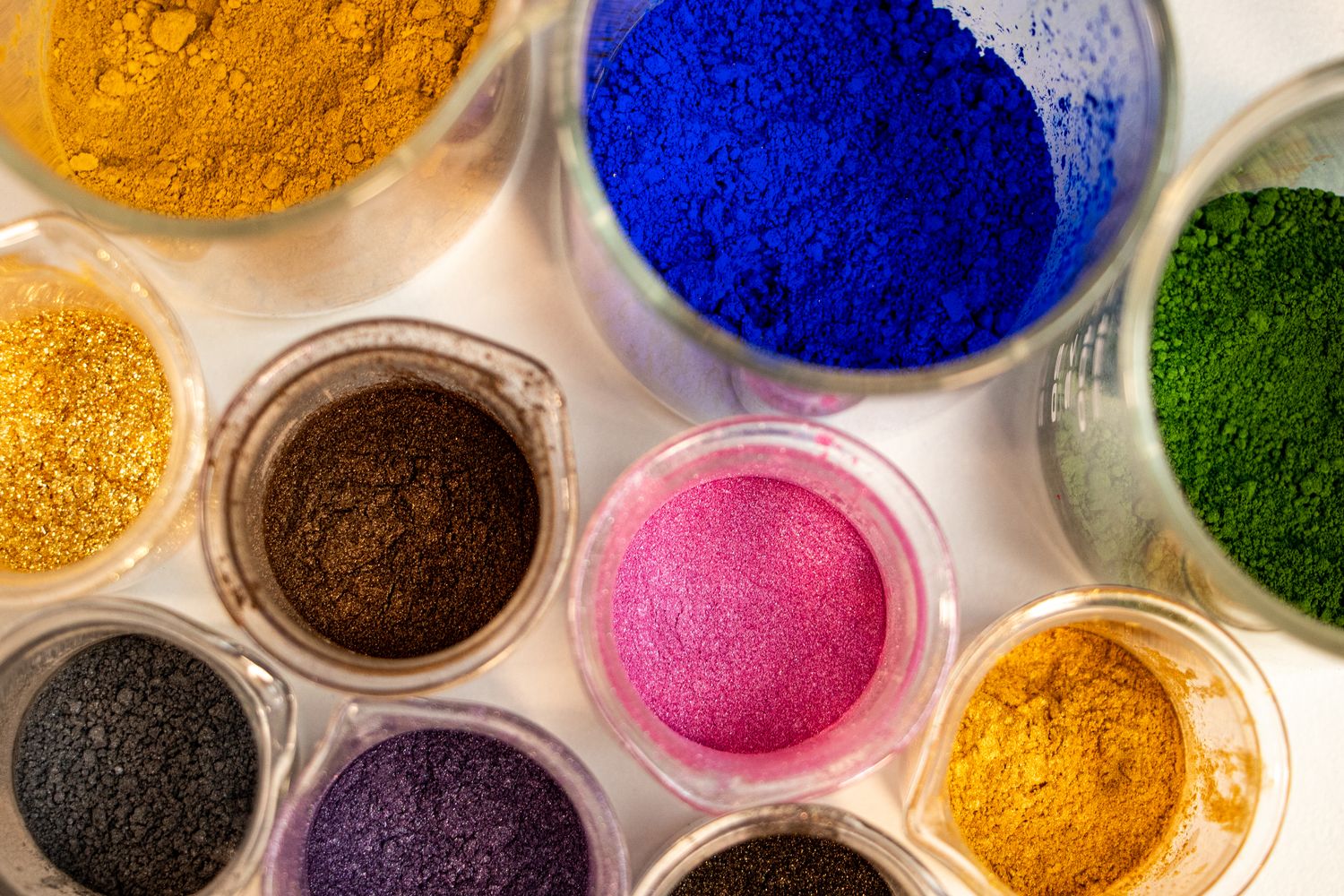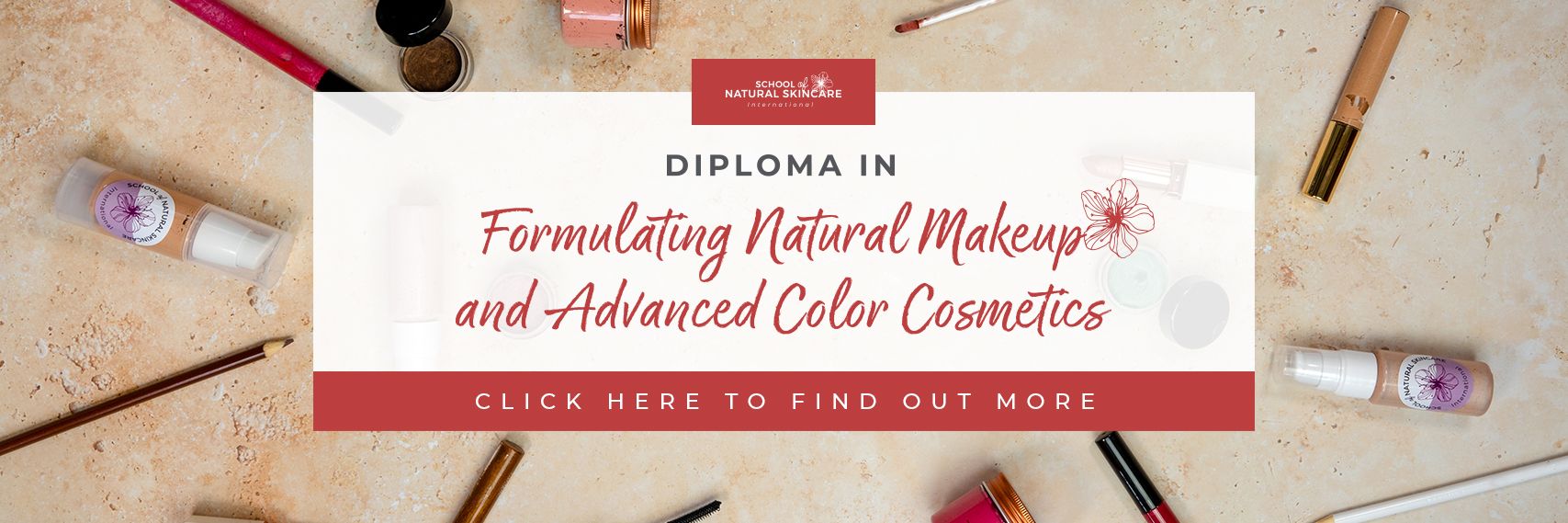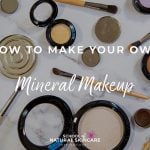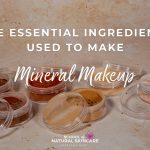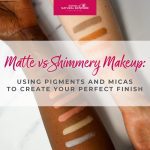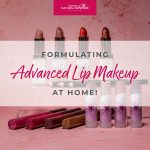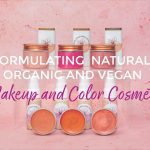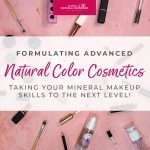In natural and organic cosmetics we have two options for where we obtain our colorants: botanical pigments and mineral pigments. In this article we want to dive in to explore both options to help you make up your own mind about what type of pigment to use in your homemade color cosmetics, and perhaps bust some myths that have been circling.
The challenge for natural and organic beauty lovers is finding and using pigments that work the best, are the most reliable and that conform to their natural and organic values.
Fortunately, there are options available, and in our Diploma in Formulating Natural Makeup and Advanced Color Cosmetics we’re teaching students all around the world how to formulate their own professional standard natural makeup and color cosmetics following the COSMOS standards. COSMOS is the best known, worldwide standard for natural and organic cosmetics. It defines the criteria that companies must meet to ensure that their products are genuine organic or natural cosmetics, produced to the highest feasible sustainability practices.
Using botanical colorants in natural color cosmetics
When thinking about colorants in natural cosmetics, one would probably immediately think about 100% natural colorants – botanical colorants/pigments.
Plants can come in all the colors of the rainbow, from light pink roses, bright red poppies, orange carrots, yellow turmeric roots, green leaves, blue butterfly pea flowers and purple irises. How could we not take advantage of this infinite color palette when creating natural makeup?!
Well, cosmetic products are not living organisms like plants are, so they don’t behave like living plants. Sadly, that means the molecules that give plants their magnificent range of colors, won’t work in the same way in a jar that sits on a bathroom shelf for months.
You see, botanical pigments are usually only stable when present inside intact plant cells. When we extract them from a plant, they usually behave very differently.
Two main factors cause instability in botanical pigments: pH and oxidation/exposure to light.
Instability due to pH
Have you ever seen the experiment with red cabbage juice? This deep purple colored liquid turns pink and then red, when exposed to acids. And it turns blue, turquoise, green and finally yellow, when exposed to alkalis!
Imagine wanting to use red cabbage colorant to achieve light blue color of your product, but the blue turns into pink immediately, because your product has acidic pH, due the ingredients it contains. Not a very practical colorant to use in cosmetics, if it changes the color according to the pH, is it? Especially since most natural cosmetics have slightly acidic pH, due to many natural preservatives being only active in an acidic environment.
If you have ever experimented with any kind of botanical pigments, you have probably noticed how most of them turn light pink when exposed to pH 4.0-5.0, which means all the lovely purples, deep blues and rich turquoises all turn pink (which might not be the color you are after).
Of course, there are exceptions for this; most notably carotenoids. Carotenoids come in a range of yellow, orange and red shades that stay pretty stable even at different pH levels. However, they are oil soluble, so they can only be used in products that contain an oil phase.
Instability due to oxidation and exposure to light
The second major issue with botanical pigments is that they are incredibly unstable. You probably know that beets contain a lovely pink-red pigment. When using it to dye a product a nice pink tint, you might be happy with the result at first, but after a couple of days or weeks, the result will change. The inviting pink color will fade; sometimes to light brown, sometimes it will almost disappear completely! Either way, your product will no longer be pink.
Color changes happen because the pigment molecules react negatively to sunlight and oxygen in the air. Both of them accelerate oxidation and eventually cause a breakdown of pigment molecules. This means that products dyed with certain botanical colorants would need to be kept in a dark, airless container which would protect them from air and light. But that’s not always possible with color cosmetics, is it?
So, what DO natural and organic cosmetic formulators use as colorants? In most cases, the answer is mineral pigments.
Using mineral pigments in natural color cosmetics
Mineral pigments have been around for centuries, they were used to make paints for all of the famous historical painters. Throughout history, they were mined from natural sources, however, nowadays they are made synthetically, but are nature-identical.
But if mineral pigments exist in nature, why make them synthetically? Well, natural sources, like rocks, can contain many different components, not all of which are good for us. Over the years of analyzing mineral pigments, scientists have found that they contain dangerous amounts of heavy metals and other toxic components. Pigments made in the lab have completely the same structure as the natural ones, but lack any of those dangerous components.
The best part about mineral pigments? They are very very stable! Their color remains the same in alkaline, neutral and acidic pH. So, if you use blue pigment and add it to your product, it will remain blue, regardless of the pH of your product. A definite bonus when making color cosmetics!
Also, mineral pigments don’t fade. Even when exposed to light and air, their color remains the same over years, not just days. Which means you don’t have to worry about your lovely pink product turning a sad brown after a couple of weeks!
Are mineral pigments COSMOS-approved?
Even though mineral pigments are made synthetically, they are approved by most major natural and organic certifications, like Ecocert and COSMOS. All of the certified natural makeup brands use mineral pigments in their products.
Ultimately, the choice of botanical or mineral pigments is entirely up to you. And that’s the beauty of formulating your own cosmetic products – you decide what you want to use and what you want to avoid. There are benefits and drawbacks to both.
In our Diploma in Formulating Natural Makeup and Advanced Color Cosmetics we only cover mineral pigments because mineral pigments are reliable, easy to use and very stable. They are the perfect choice for professional looking, natural color cosmetics.
Where can you learn more about mineral pigments in natural makeup and color cosmetics?
If you want to learn how to create your own makeup and color cosmetics, and discover more about beautiful mineral pigments, we’ve got you covered with our Diploma in Formulating Natural Makeup and Advanced Color Cosmetics
We are proud to bring you the first and only online training course that focuses on teaching you how to formulate professional standard natural and organic makeup and color cosmetics.
By enrolling on this online, multimedia diploma course, you’ll spend time customizing your products to create your perfect shade, enabling you to make products suited perfectly to your skin tone and preferences, whether that be makeup for the face, lips or eyes!
You’ll learn to make more than 25 different types of products including mascara, liquid eyeliner, eyeshadows, lipstick, lip liners, concealer sticks, foundations, cream blush, bronzer sticks, liquid highlighter and much more.
You can then perfect your own complete range of professional makeup and color cosmetics for yourself, or use them to establish a natural makeup and color cosmetics range!
As always, please contact us with any questions on hello@schoolofnaturalskincare.com.

